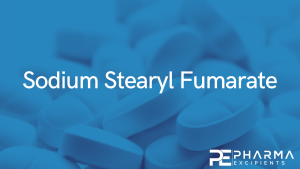Compression of amorphous solid dispersions prepared by hot-melt extrusion, spray drying and vacuum drum drying

The present study explored vacuum drum drying (VDD) as an alternative technology for amorphous solid dispersions (ASDs) manufacture compared to hot-melt extrusion (HME) and spray drying (SD) focusing on downstream processability (powder properties, compression behavior and tablet performance). Ritonavir (15% w/w) in a copovidone/sorbitan monolaurate matrix was used as ASD model system. The pure ASDs and respective tablet blends (TB) (addition of filler, glidant, lubricant) were investigated. Milled extrudate showed superior powder properties (e.g., flowability, bulk density) compared to VDD and SD, which could be compensated by the addition of 12.9% outer phase. Advantageously, the VDD intermediate was directly compressible, whereas the SD material was not, resulting in tablets with defects based on a high degree of elastic recovery.
Highlights
- • ASD technology has influence on particle morphology.
- • Compression behavior dominated by particle morphology.
- • Vacuum drum dried intermediate direct compressible into tablets.
- • Vacuum drum dried material shows better tabletability as milled extrudate.
- • ASD technology: no impact on tablet disintegration/dissolution
Compared to HME, the VDD material showed superior tabletability when formulated as TB, resulting in stronger compacts at even lower solid fraction values. Despite the differences in tablet processing, tablets showed similar tablet performance in terms of disintegration and dissolution independent of the ASD origin. In conclusion, VDD is a valid alternative to manufacture ASDs. VDD offered advantageous downstream processability compared to SD: less solvents and process steps required (no second drying), improved powder properties and suitable for direct compression.
Download the full research paper as PDF here: Compression of amorphous solid dispersions prepared by hot-melt extrusion, spray drying and vacuum drum drying
2.1 Materials
Ritonavir (purity > 99.8%) was obtained from AbbVie Inc. (North Chicago, US). Copovidone (polyvinylpyrrolidone–vinyl acetate copolymer, Kollidon® VA 64) was purchased from BASF SE (Ludwigshafen, Germany), fumed silicon dioxide (Aerosil® 200) from Evonik Industries (Essen, Germany), sorbitan monolaurate (Span® 20) from CRODA (Nettetal, Germany), dicalcium phosphate anhydrous (DI-CAFOS® A60) from Chemische Fabrik Budenheim (Budenheim, Germany), and sodium stearyl fumarate (PRUV®) from JRS Pharma (Rosenberg, Germany). Acetone (Emprove® Essential, purity 96%) and methanol (Emprove® Essential, purity 99.5%) were obtained from Merck KGaA (Darmstadt, Germany).
Barbara V. Schönfeld, Ulrich Westedt, Karl G. Wagner,
Compression of amorphous solid dispersions prepared by hot-melt extrusion, spray drying and vacuum drum drying,
International Journal of Pharmaceutics: X, 2021, 100102,
ISSN 2590-1567,
https://doi.org/10.1016/j.ijpx.2021.100102.
Read more on Sodium Stearyl Fumarate as a pharmaceutical excipient here:


